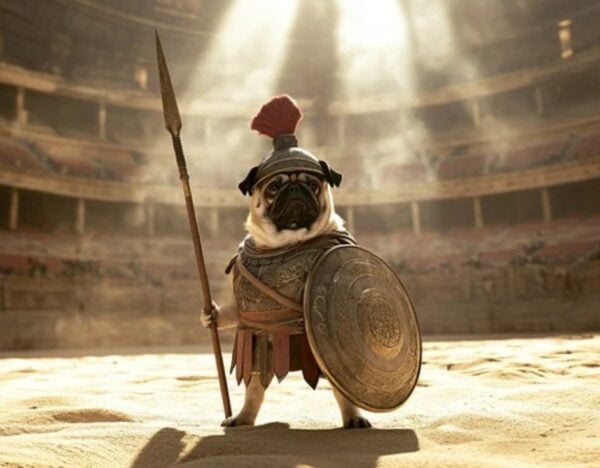 Last year, Italy officially implemented the ‘Piracy Shield‘, a system that aims to deter and decrease live sports streaming piracy.
Last year, Italy officially implemented the ‘Piracy Shield‘, a system that aims to deter and decrease live sports streaming piracy.
Since then, Piracy Shield has blocked access to thousands of IP-addresses and domain names associated with unauthorized broadcasts.
Despite overblocking concerns, the massive blocking operation is seen as a key success by the authorities and many participating rightsholders. The same is true for the updated copyright law in general, which introduced fines of up to €5,000 for pirate consumers.
Study Reveals Piracy-Shield Impact
While there is no shortage of opinions on these measures, hard data on the impact of the increased anti-piracy efforts is less common. Initial data indicated that the Piracy Shield had little impact on legal subscriptions, but thorough research is lacking.
This week, new data from IPSOS adds more context. The IPSOS survey and report have been published annually for several years in collaboration with local anti-piracy outfit FAPAV. The most recent version covers 2024, which is the first year Piracy Shield was active.
A quick glance at the headline numbers suggests a trend going in the right direction. In the span of a year, overall piracy rates decreased, especially among teens. The same is true for piracy volume, which dropped significantly.
Piracy Trends in Italy: 2023 vs 2024
Metric2023 Survey Data2024 Survey Data**Overall Piracy Rate (adults)**39%38%**Teen Piracy Rate (10-14 years)**45%40%Pirates Converting After Block45%47%**Piracy Volume (Total Acts)**319 Million295 Million
Data sourced from the FAPAV/Ipsos surveys.
As shown above, pirates are increasingly converting to legal services after encountering a block. Nearly half of all pirates who ran into a blocked site or service reportedly sought legal options, which is a notable success. However, since the piracy rate only dropped a single percentage point in a year, piracy remained prevalent.
This brings us to some of the seemingly disappointing outcomes of the survey, including the prevalence of live sports streaming piracy, which is the main target of the Piracy Shield program.
The report finds that in 2024, 15% of the population had used pirate live sports streaming services at some point, which is the same figure as a year before. In other words, sports piracy did not decrease after the Piracy Shield launched.
When compared to 2023, prevalence of most types of piracy remained relatively stable, with a few single percentage point drops here and there. Of the researched content categories, film piracy was the most common with 29% of the population admitting to have pirated something in 2024.
Comparison of Piracy rate by Type
Type of Piracy2023 Rate2024 Rate**Overall Piracy (any type)**39%38%Film Piracy30%29%Series Piracy22%23%Software Piracy21%22%Live Sports Piracy15%15%Illegal IPTV Use23%22%
Percentage of the adult population in Italy that engaged in each type of piracy at least once during the year.
These percentages mostly apply to online piracy, but also include physical piracy and indirect piracy. The latter refers to receiving pirated content from another person, such as via a USB drive or by watching someone else’s copy.
Volume Down, Damages Up
While there was no drastic decrease in the piracy rates, the positive note is that the overall piracy volume dropped more significantly. The reported 295 million piracy ‘acts’ in 2024 represent an 8% drop compared to the year before.
On the flip side, however, the reported financial damages increased. Across all sectors, the study estimates the loss in turnover at €2.2 billion, a substantial 10% increase year over year.
The most dramatic increase is reported in the live sports streaming category. These losses were estimated at €285 million in 2023 and €350 million last year, a 23% increase. That’s despite the Piracy Shield measures, which are aimed at sports piracy.
Awareness
Piracy Shield definitely didn’t go unnoticed by the public at large, as the survey reveals that 70% are aware of the new anti-piracy law, which also introduced financial penalties for individual pirates.
For now, the law’s looming punishments lack deterrence, as 42% of the population doubts its effectiveness. At the same time, only 56% of the self-proclaimed pirates believe they risk being punished.
The Piracy Shield fares much better on this metric as an impressive 79% (of those who are aware of it?) believe that the anti-piracy blocking system is effective.
All in all, the IPSOS study indicates that there is still plenty of work to be done before online piracy is seriously tackled. With extensive piracy blockades and serious fines already in place, it will be interesting to see what comes next.
—
More details and information on the 2024 FAPAV/Ipsos study, released in Rome on Tuesday, is available here.
From: TF, for the latest news on copyright battles, piracy and more.
From TorrentFreak via this RSS feed










 28 Weeks Later
28 Weeks Later


No commands found. Did you mean to send me RSS commands?
Available commands:
You can include multiple commands in a single message, each on a new line.